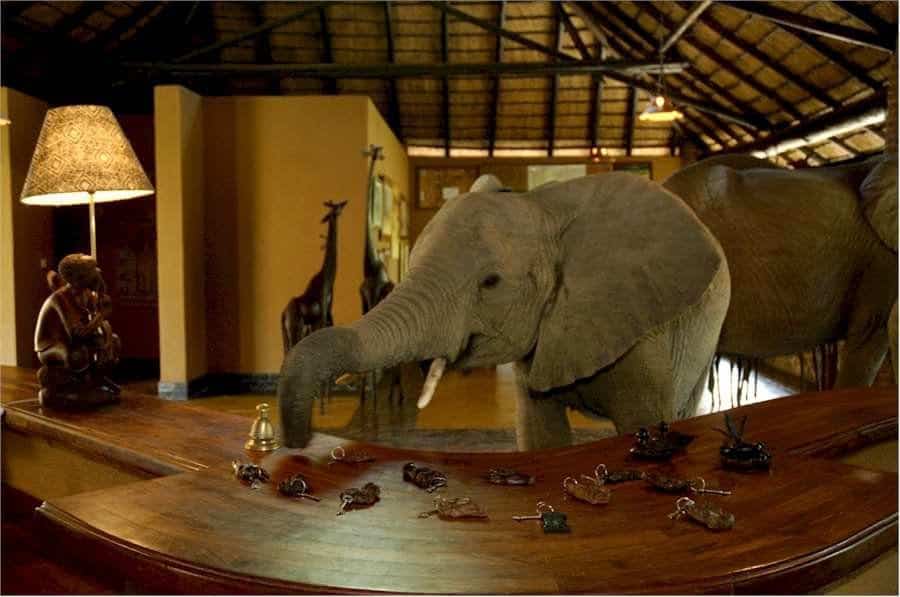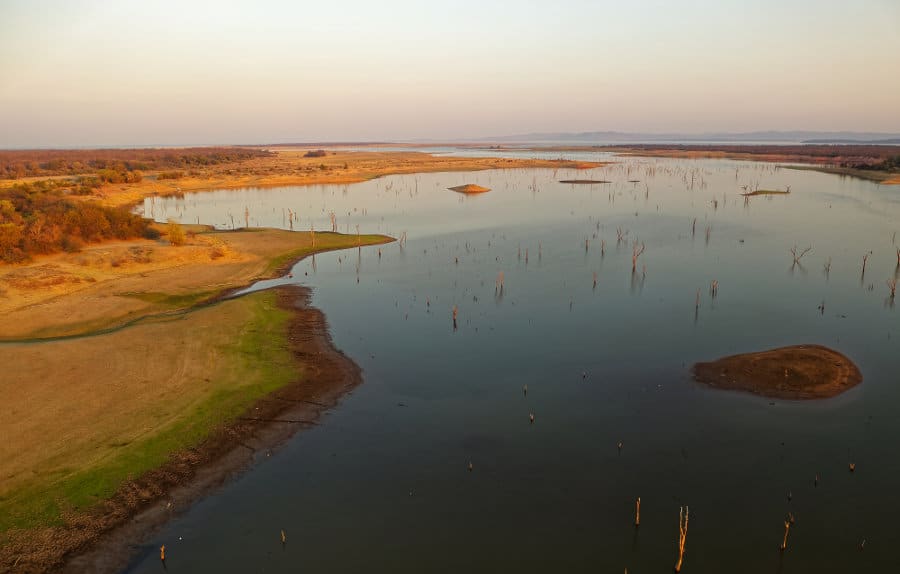A safari in Kasanka National Park exceeds one’s expectations. The most predominant safaris in Africa draw up pictures of grass velds, shrubby bushes, and the sun setting along the horizon. Along with wandering elephants, and lounging hippos.
What makes Kasanka so special is that the park offers you the chance to experience this African safari – as well as the remote jungle and rainforest landscapes found in Zambia.
There is a rich diversity of animals that proves Kasanka is a unique venture. It offers rare sightings and incredible bird and plant species.
As one of the smaller parks in Zambia, a trip here promises intimate wildlife experiences, personalized tours, and luxury stays. Pair this with an array of exciting adventures and tranquil surroundings, and you’ve got yourself an unforgettable safari.
And to make things extra spectacular, the annual bat migration takes place here. Are you ready to witness over 10 million fruit bats journey through the country?
Reasons to Visit Kasanka Park
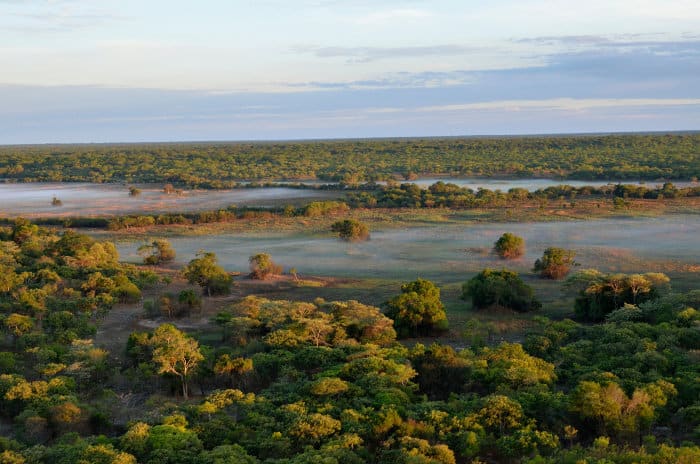
A chance to leave the bustling city life and escape on a safari is a reason good enough. However, some people may need a little more convincing.
Here are the top reasons to visit Kasanka, and what the experience can provide for you.
Sunrise, sitatungas, and swamps
Part of a safari experience involves setting the clock for 6 am and venturing out to watch the sunrise. As well as seeing the deep red and yellow colors, it’s a chance to experience most of the wildlife – this is the time when animals are most active.
Kasanka is famous for being home to the quiet and mysterious sitatungas (swamp-dwelling antelope), which rarely show face to strangers. Enjoy an early game to the marshlands in the morning, to hopefully catch a glimpse of the sitatunga waddling through the grasses.
Ask your guide to share their sitatunga facts to really appreciate the beauty of these creatures.
Luwombwa loop
For the water enthusiast, a trip along the twisty, turny river is essential. A boat or canoe ride offers the chance to explore the array of bird and plant species residing along the river.
An afternoon picnic overlooking the water, and a visit to the ‘tall tree’ (a viewing spot) for sights of the canopies ends off the loop.
Wasa walk
While game drives are great, nothing beats taking a stroll through the grasslands and jungle landscapes. As well as being exhilarating, you can stretch your legs and discover the smaller insects and birds that call this park home.
The guided walks will take you around Wasa Lake or through Wasa 2 and Kalamba.
Kasanka wilderness trails
One of the incredible activities that are on offer involves a four-day hiking trail. You can discover the park’s landscapes and fascinating wildlife. Combine this hiking with stays in the luxury lodges and exclusive campsites.
The wilderness trail is one of the highlights of the park. Spy upon tree frogs, sitatunga, birdlife, and smaller animals like rabbits and African warthogs.
Witness the Fruit Bat Migration in All Its Glory
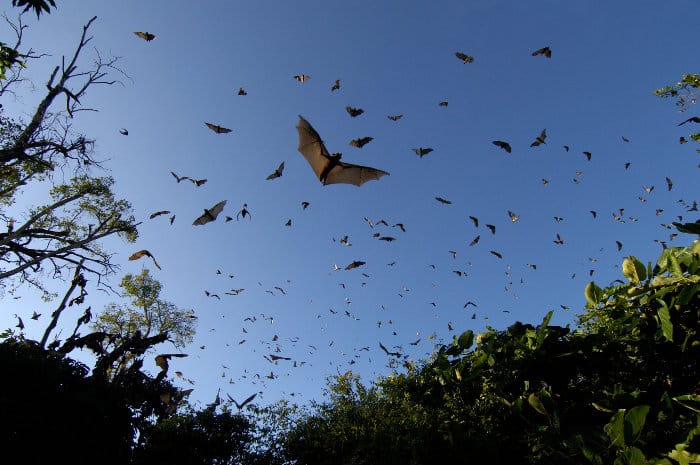
Each year, between October and December, over 10 million bats dart through the sky and over the swamps. This experience of witnessing the straw-colored fruit bat is entirely unique to Kasanka and is truly a once in a lifetime opportunity.
Given the number of bats soaring through the sky, the movement is the biggest mammal migration in the world. The entire phenomenon lasts around 90 days, and is best seen during sunrise and sunset.
The top place to see this spectacular show is from one of the park’s numerous treetop hides in bat forest.
Bat migration facts

Wondering what this great migration is all about and what it entails?
- With tiny bodies and a large wingspan, bats use a lot of energy hunting and flying around. Which is why they rely on large amounts of food, such as plant nectar, to fuel their ventures. They can consume twice their body weight in just one night.
- Research has shown that the majority of the female bats migrating are either pregnant or nursing. Meaning they rely on an abundance of fresh fruit to increase their energy levels.
- The African straw-colored fruit bat is the most widespread of the bat species found in Africa. When they are adults, they reach 20 cm in size and play a vital role in pollinating flowers and seeds.
- Each morning, once the bats have arrived at their destination, you’ll find them pushing and shoving each other, with the occasional squeal. There isn’t much space on the towering trees to host millions of fruit bats. That’s why it’s common for branches to snap under the pressure.
Game Viewing and Discovering the Wildlife

While the bat migration gains the attention of many travelers, the park has so much more to offer. As well as the bats and the sitatunga, here is some other wildlife you can expect to see in the park.
Large mammals: Hippos, elephants, sable, wildebeest, zebra, and Lichtenstein’s hartebeest. The blue monkey and Kinda baboon are locals in the park that are almost guaranteed sightings.
Bird species: Böhm’s bee-eater, wattled crane, Pel’s fishing owl, and African crowned eagle. Also look out for African finfoot, African pitta, African broadbill, African blue quail, and many more.
You can spot animals by booking a game drive, a guided walk, canoe through the park, or with a leisurely self-drive.
Getting to Kasanka
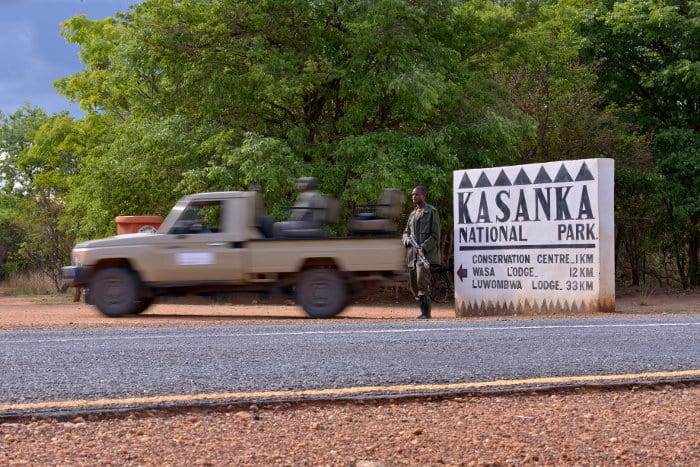
The first step of your journey involves making your way to Lusaka, the capital of Zambia. International travelers can fly into Kenneth Kaunda International Airport. From here, getting a shuttle service or renting a car to get to Kasanka is relatively simple.
The car ride will take you around five or six hours. You’ll be traveling on tar roads up until the park entrance. Inside the park, the roads are in excellent condition.
Having Google maps on hand, or a trusty road map is a must. And if you’ve got the time, and a sense of adventure to explore, consider doing a stopover at the Forest Inn or the Mapontela Guesthouse.
If driving isn’t an ideal option, visitors always have the option to travel by private charter, as there is a small airport within the park. The flight will take you a mere one and a half hours.
Kasanka Accommodation to Witness the Bat Migration
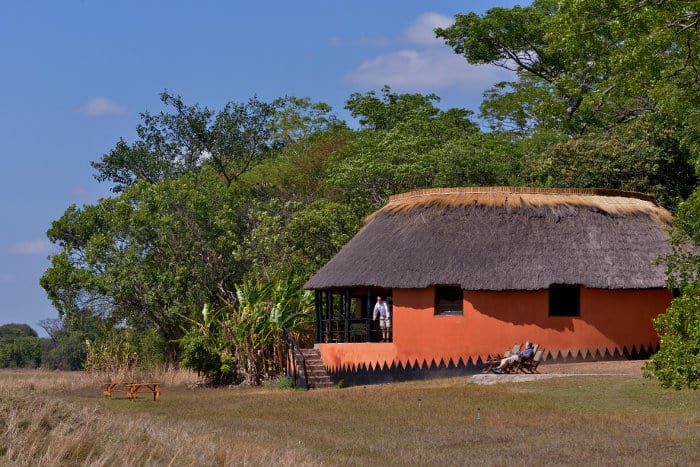
Kasanka National Park boasts three fantastic accommodation spots. Made up of two beautiful lodges and a riverside campsite. Take your pick and find a spot perfect for you and your ventures. Or if time allows, book yourself a stay at all three.
Wasa Lodge accommodation
Known as a ‘piece of peace’, and nestled in the heart of Kasanka, Wasa Lodge has incredible views overlooking the lake. Guests have a choice of seven chalets – four larger ones, and three rondavels that are ideal for couples. All the quaint chalets have views of the lake.
If you opt for the larger chalets, enjoy double beds, a verandah for stargazing and book reading, and an en-suite bathroom. While the smaller spots feature double or twin beds, and a bucket shower – which is particularly fun in summer.
When you’re not out on a game drive, cozy up in the dining area that shows off views of the water and a cozy bar. As the night starts to chill, spend your evening warming up by the bonfire and catching glimpses of the migration (if the season is right).
Luwombwa Lodge
Tucked away, situated right against the banks of the Luwombwa River, these chalets are beyond perfect for adventurers. With the river as your playground, get ready for days paddling out on the waters.
Although simple, Luwombwa Lodge offers an entirely private stay with the freedom to fill your days with activities of your choosing. Whether that be game drives, guided walks, bird watching, fishing, or canoeing.
Kasanka campsites
Nothing beats camping right in the midst of some of the most incredible wildlife in the world. Kasanka hosts five camping sites fit for the needs of different campers.
- Pontoon 1: Great for large groups, and one of the most popular sites, given its fantastic location.
- Pontoon 2: Ideal for families and set in a forest clearing near the river.
- Pontoon 3: Great for families or small groups and overlooks a swamp clearing – which the sitatunga favor.
- Kabwe: A beautiful setting overlooking the grasslands that is perfect for large groups.
- Bufumu: A campsite near ‘tall tree’ that features tree canopies to watch the bats migrate while sitting in a treetop.
Ready for the Bats Migration Through Kasanka?
While bats may not be everyone’s cup of tea, that shouldn’t stop you from planning a visit to Kasanka National Park. Throughout the drier months, when no bats are around, wildlife viewing is at its peak.
So from wildlife adventures and incredible game viewing to witnessing the migration in action, Kasanka is a great option for a safari.
Book a tailor-made safari to experience one of the lesser-known, more intimate and private national parks in Zambia.

